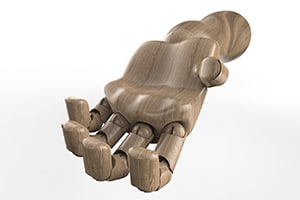 Ergonomics is a topic that’s oftentimes overlooked or misunderstood among employers. Whether your workplace is a typical office setting or an industrial factory, you should carefully analyze ergonomics to ensure workers are given a safe, healthy environment to perform their professional duties.
Ergonomics is a topic that’s oftentimes overlooked or misunderstood among employers. Whether your workplace is a typical office setting or an industrial factory, you should carefully analyze ergonomics to ensure workers are given a safe, healthy environment to perform their professional duties.
The term “ergonomics” literally translates from the Greek language into “work” and “laws,” which sums it up pretty well.
For a closer look at the impact of ergonomics in the workplace, and steps you can take to improve it, keep reading.
What is ergonomics?
So, what exactly is ergonomics? In short, it’s the science/relationship between a worker and his or her environment. The concept of ergonomics focuses on creating an ‘ideal’ work environment where physical stress is reduced. Physical stress in the workplace is typically caused by one of two different elements: environmental factors and employee motion. An example of an environmental factor is a poorly designed office chair which lacks lumbar support. An example of physical stress caused by employee motion is a worker bending their back (rather than their feet) to pick up a box or heavy object.
What are the risks of poor ergonomics in the workplace?
Allowing employees to work in an environment with poor ergonomics leaves them vulnerable to injury while reducing their overall efficiency and productivity. The truth is that most employers overlook the importance of ergonomics in the workplace. Yet, OSHA explain poor ergonomics can lead to work-related Musculoskeletal Disorders (MSDs) — which are among the most frequently reported causes of lost or restricted work time.
When employees are constantly stressed on a daily basis, their normal physical body functions gradually begin to decline. The same job they used to complete in an hour might take them an hour and a half now. And rather than showing up for their shift every day, they might call in sick once a month. It’s the subtle nuances such as this that really cut into companies’ revenue and ultimately their profits.
Another example of physical stress caused from poor ergonomics is when workers are forced to stand on hard concrete for long periods of time. This may not seem like an issue, but standing on hard surfaces for eight or more hours a day leaves workers vulnerable to a wide variety of injuries.
See the list below for some of the most common types of foot injuries and conditions:
- Plantar fasciitis
- Bunion
- Bone fracture
- Stress fracture
- Sprain
- Osteoarthritis
Rather than completely renovating your workplace with new flooring, you can lay out comfort mats in high-traffic areas to improve its ergonomics. These mats are designed to create a softer, more comfortable area where employees can safely work. Learn more about anti-fatigue mats in our previous blog post.